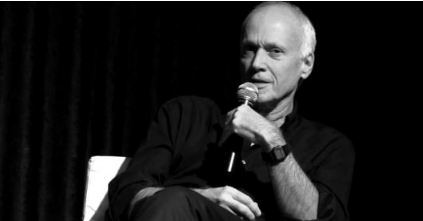 I was rereading Walter Kaufmann’s Nietzsche last night, focusing on the bit about Nietzsche’s “style of decadence.” This should be interesting to any of us but especially to writers of nonfiction. Like Kierkegaard, Nietzsche is an anti-system thinker; he attacked the idea that the classic philosophical ideals of system, coherence and completeness were a guarantee of truth (recall how Kierkegaard mischievously titled his great work Concluding Unscientific Postscript). His style of decadence was aphoristic and fragmentary. Each piece was a thought experiment, not necessarily meant to reveal a truth. He called them Versuche, experiments or attempts (reflect on how this resonates with Montaigne’s essais, the root of which is the verb essayer, to attempt or try), and they varied in length from a line to several pages. He’s difficult to read because he is playful and ironic and because of this open and hypothetical quality. His style is also dialectic in the sense that he often approaches a topic by critiquing the assumptions of conventional philosophical arguments, thus trying to find a negative or backwards path to a substantive claim.
I was rereading Walter Kaufmann’s Nietzsche last night, focusing on the bit about Nietzsche’s “style of decadence.” This should be interesting to any of us but especially to writers of nonfiction. Like Kierkegaard, Nietzsche is an anti-system thinker; he attacked the idea that the classic philosophical ideals of system, coherence and completeness were a guarantee of truth (recall how Kierkegaard mischievously titled his great work Concluding Unscientific Postscript). His style of decadence was aphoristic and fragmentary. Each piece was a thought experiment, not necessarily meant to reveal a truth. He called them Versuche, experiments or attempts (reflect on how this resonates with Montaigne’s essais, the root of which is the verb essayer, to attempt or try), and they varied in length from a line to several pages. He’s difficult to read because he is playful and ironic and because of this open and hypothetical quality. His style is also dialectic in the sense that he often approaches a topic by critiquing the assumptions of conventional philosophical arguments, thus trying to find a negative or backwards path to a substantive claim.
Kaufmann:
Each aphorism or sequence of aphorisms–and in Nietzsche’s later works some of these sequences are about a hundred pages long, and the aphoristic style is only superficially maintained–may be considered as a thought experiment. The discontinuity or, positively speaking, the great number of experiments, reflects the conviction that making only one experiment would be one-sided. One may here recall Kierkegaard’s comment on Hegel: “If Hegel had written the whole of his Logic and then said… that it was merely an experiment in thought…then he would certainly have been the greatest thinker who had ever lived. As it is, he is merely comic.” (Journals, ed. Alexander Dru, 134). Nietzsche insists that the philosopher must be willing to make ever new experiments; he must retain an open mind and be prepared, if necessary, “boldly at any time to declare himself against his previous opinion” (FW 296)–just as he would expect a scientist to revise his theories in the light of new experiments.
Think how liberating it must be to imagine each piece of writing as an experiment, as a trial balloon, as inquiry instead of conclusion; too many writers inhibit themselves by trying to stake out their territory, by trying to tell the truth. Instead of writing, This is what happened; you write, Is this what happened, or this, or this?
Theodor Adorno practiced Nietzsche’s dialectical and aphoristic style in spades. See his Minima Moralia. Ludwig Wittgenstein invented one totalizing systematic philosophy in the Tractatus Logico-Philosophicus and then turned around and invented a fragmentary anti-systematic philosophy in the Philosophical Investigations (fragments and thought experiments on the nature of language). See also E. M. Cioran’s books of aphorisms. e.g. The Trouble With Being Born.
dg





 I saw this article today…it was sent to me by a friend actually. Cool title of
I saw this article today…it was sent to me by a friend actually. Cool title of 